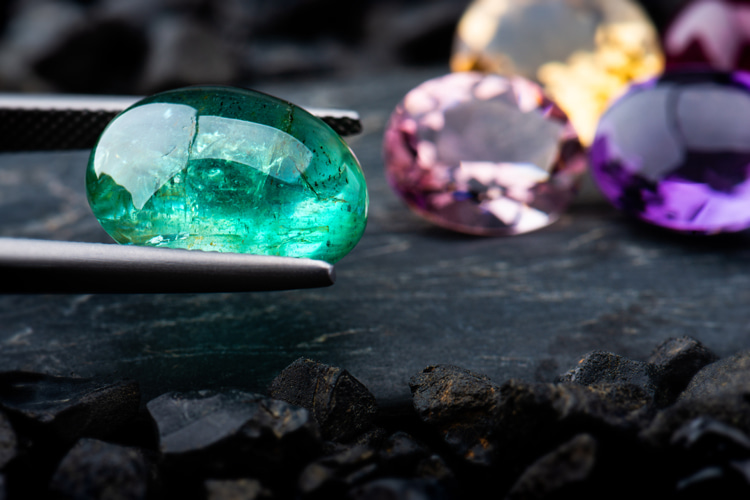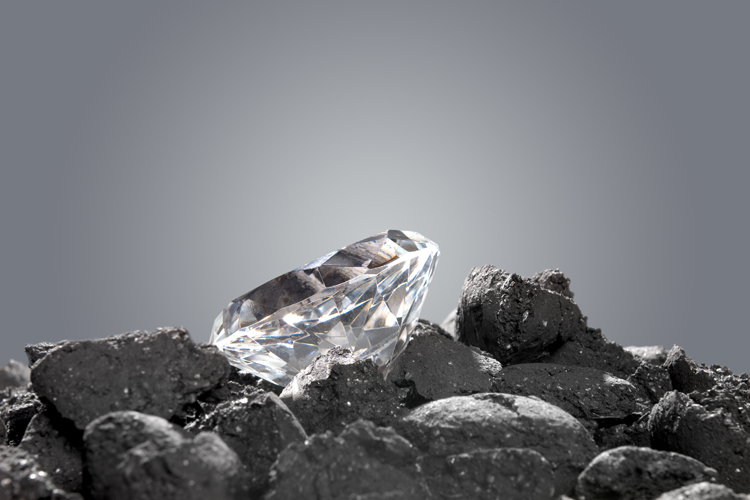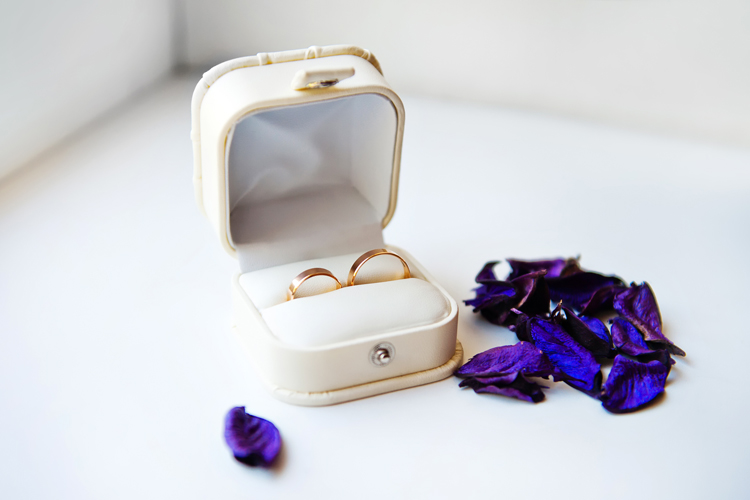The Mohs Scale of Mineral Hardness is a well-known term in the jewelry world. It’s one of the critical variables to evaluate gemstone wearability.
The qualitative ordinal scale determines a mineral’s resistance to scratch by comparing it with another mineral of a known or defined hardness.
When worn in jewelry pieces, gemstones are naturally exposed to damaging abrasion.
The friction caused by fabrics, cleaning materials, particles, the impact on hard surfaces, etc., will have a different effect on the appearance of rings, bracelets, or necklaces, depending on the gem that adorns them.
Some minerals are more delicate, like opal, requiring careful use to keep them polished.
Others are incredibly sturdy, like ruby or diamond, and therefore can keep their impressive shine under rougher conditions.
The resistance of a gem to scratch, also known as hardness, is assessed using the Mohs Scale.
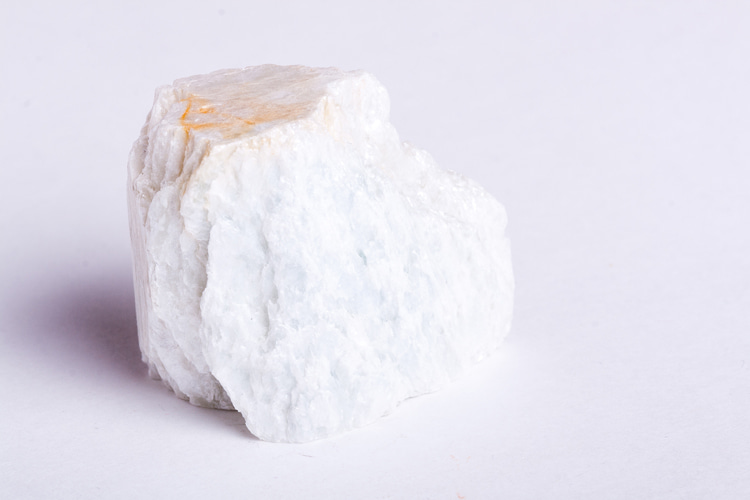
Scratching the Surface
In 1812, German geologist and mineralogist Friedrich Mohs developed a method to determine the relative hardness of minerals by scratching their surface with another specimen of defined hardness value.
Contrary to the prevalent systems at the time, Mohs focused on the physical properties of crystals to classify them instead of on their chemical composition.
Through his search, he deduced that if a mineral can scratch another, then it must be harder.
After ten years of research, he created a comparative scale named The Mohs Scale of Mineral Hardness.
The scale comprises ten reference minerals of distinctively different hardness levels, classified from the softest (1 – talc) to the hardest (10 – diamond, the hardest known mineral at the time), that work as a comparative measure to define the resistance of new samples.
Any mineral can be ranked on the other specimens that it can or cannot scratch.
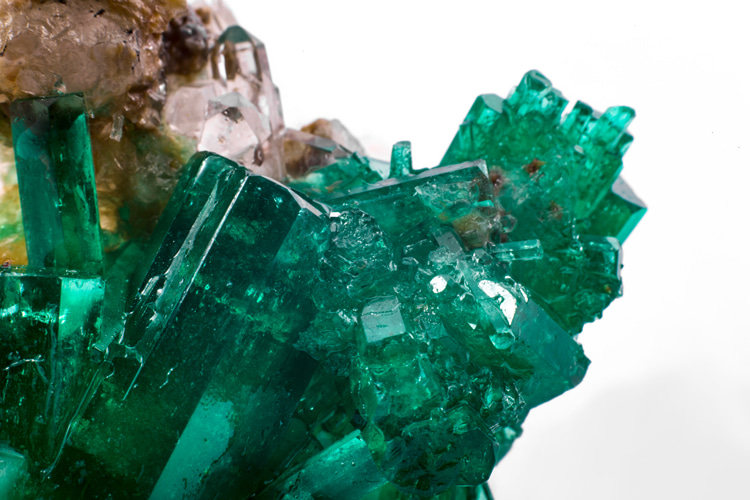
Experts place a sharp point of a reference mineral on its surface to test a gemstone’s hardness, attempting to produce a visible scratch.
The mark left is caused by the breakage of millions of atomic bonds on a microscopic scale.
The effect of the references on the tested specimen and vice versa will determine the new item’s place on the scale.
For example, if specimen A scratches specimen B, then A is harder than B. On the other hand, if A cannot scratch B, then B is harder than A.
If both are relatively incapable of scratching each other, then A and B are equal in hardness.
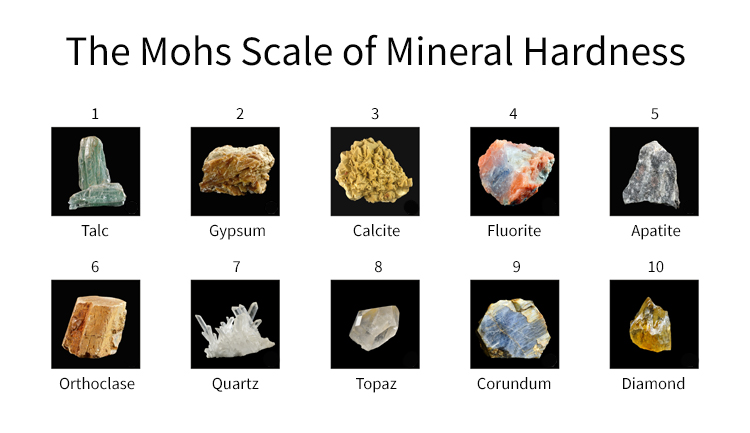
In a different scenario, if specimen A can be scratched by specimen B, but not by specimen C, then A is between the hardness of B and C.
The Mohs Scale is purely ordinal, only ranking minerals by comparing them with each other.
Although it is approximately linear in the beginning, the differences become starker at the top of the scale.
For example, corundum (9) is two times harder than topaz (8), and the diamond is four times as hard as corundum.
The method developed by Friedrich Mohs has also been applied to metals. For example, gold and silver rank between 2,5 and 3, copper is a 3, platinum is 4 to 4,5, and titanium is a 6.
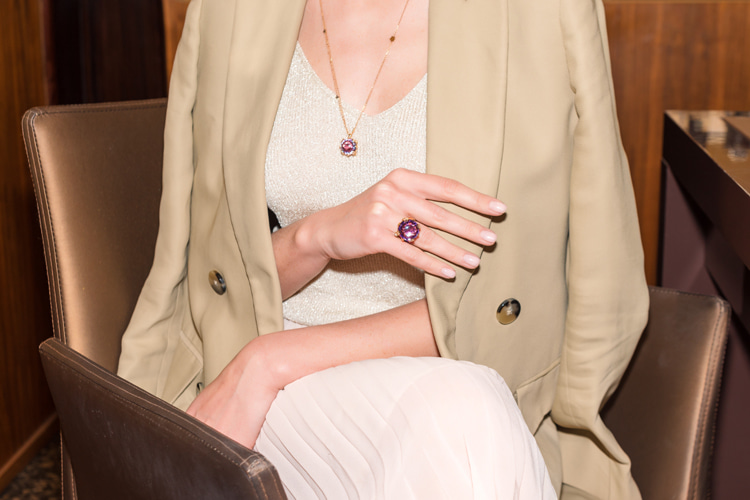
The Mohs Scale in Jewelry
In the jewelry field, the Mohs Scale is one of the three main tools used to determine a stone’s durability and wearability.
When designing a piece of jewelry, designers consider the hardness and toughness, and stability of gemstones.
The resistance of metals is also taken into consideration, as the combination of the chosen materials will impact the final result.
The hardness of a gemstone alone doesn’t determine its wearability.
Pearls, which rank between 2.5 and 4.5, are abundantly used, despite their softness.
However, softer gemstones are more prone to damage, therefore requiring more careful handling and protective settings.
They should be used in safer areas, like the neck and ears, and avoided in rings or bracelets.
Jewelry pieces meant to be in contact with hard surfaces or other jewelry should rank higher than 7 on the Mohs scale, such as amethyst and emerald (7-8), topaz (8), ruby, and sapphire (9) or diamond (10).
Gems with a value lower than 7, like amber (2-2.5), turquoise (5-6), or moonstone (6), are more likely to become easily scratched.
They can be affected by something as microscopic as airborne quartz particles (7), commonly present in dust.
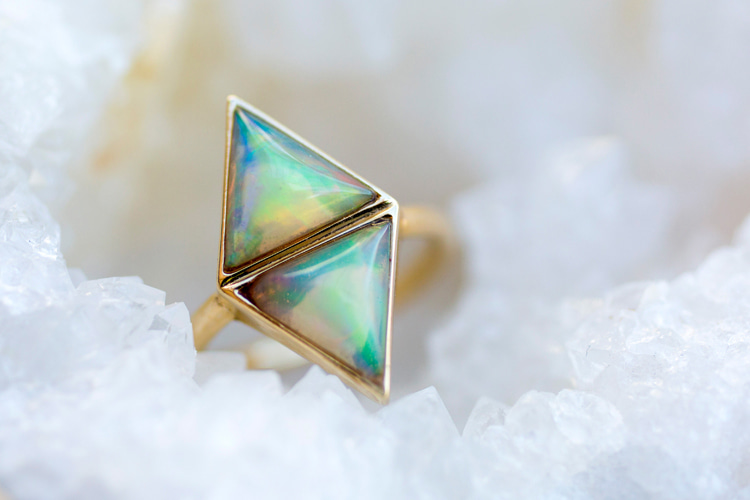
Conservation and Care of Gemstones Lower Than 7
Information about the hardness value of a piece of jewelry provides knowledge on how to preserve it better.
Besides having to be thoughtfully set and worn, softer gems also require extra care when it comes to storage and cleaning.
It doesn’t mean much to wear them in protected areas of the body if they are mindlessly kept in direct contact with harder stones that may scratch them or if they aren’t properly clean.
Each piece of jewelry should be carefully placed inside a jewelry box, preferably with a felt lining, making sure that the pieces don’t touch each other.
Since dust particles can damage low hardness crystals, they shouldn’t only be cleaned with a soft dry cloth.
If there are dust particles on the surface of the crystal and you wipe them, they may scratch the gem’s surface.
To prevent scratching, gently rinse the piece with warm water to remove any dust before passing the cloth over it.
It’s also essential to make sure the item is completely dry before storing it.
These cares are particularly relevant to keeping more delicate gemstones in proper shape.
Still, they should be extended to all jewels since environmental factors like humidity, light, heat, and abrasion can affect many metals and crystals, despite their hardness factor.
